Informal Essay By English
I wish the students of the college entrance examination can win the gold toad and win the title of the gold list
参考书籍:“凤凰架构”
负载均衡(load balance)
负载平衡是指在一组后端服务器(也称为服务器场或服务器池)之间有效地分配传入的网络流量
现代高流量网站必须以快速可靠的方式处理来自用户或客户端的数十万(如果不是数百万)并发请求并返回正确的文本、图像、视频或应用程序数据。为了经济高效地扩展以满足这些高容量,现代计算最佳实践通常需要添加更多服务器。但是添加更多服务器也会带来一系列问题,对于用户来说系统就是一个 web 网页,它并不关心你有多少台服务器在工作,因此如何构建和调度服务集群这事情,又必须对用户一侧保持足够的透明,即使请求背后是由一千台、一万台机器来共同响应的,也绝非用户所关心的事情,用户需记住的只有一个域名地址而已。调度后方的多台机器,以统一的接口对外提供服务,承担此职责的技术组件被称为“负载均衡”(Load Balancing),而负载均衡组件又可以分为“基于硬件的负载均衡”、“基于软件的负载均衡”,但不管是哪种记载均衡器,他们都有以下能力:
跨多个服务器有效地分配客户端请求或网络负载
通过仅向在线服务器发送请求来确保高可用性和可靠性
提供根据需求添加或减少服务器的灵活性
基于硬件的负载均衡
基于硬件的负载均衡又叫“四层负载均衡”、基于软件的负载均衡又叫“七层负载均衡”,这里的四层、七层指的是OSI 七层模型中第四层传输层和第七层应用层,而每一层的含义属于网络的知识,这里就不花费篇幅去解释,如果感兴趣的可以去WIKI进一步了解相应的知识
而为什么把基于硬件的负载均衡叫做四层负载均衡则是因为,所有四层负载均衡器的工作模式的共同特点是维持着同一个 TCP 连接,而不是说它只工作在第四层。事实上,这些模式主要都是工作在二层(数据链路层,改写 MAC 地址)和三层(网络层,改写 IP 地址)上,单纯只处理第四层(传输层,可以改写 TCP、UDP 等协议的内容和端口)的数据无法做到负载均衡的转发,因为 OSI 的下三层是媒体层(Media Layers),上四层是主机层(Host Layers),既然流量都已经到达目标主机上了,也就谈不上什么流量转发,最多只能做代理了。虽然真正工作的层次在二层和三层,但是由于习惯和方便因此把作用在二层和三层的负载均衡都统一叫做四层负载均衡,那四层负载均衡器是如何完成负载均衡器相应的能力的呢?
下面两种负载均衡的解释均引用自“凤凰架构”
数据链路层负载均衡(二层负载均衡)
参考上面 OSI 模型的表格,数据链路层传输的内容是数据帧(Frame),譬如常见的以太网帧、ADSL 宽带的 PPP 帧等。我们讨论的具体上下文里,目标必定就是以太网帧了,按照 IEEE 802.3 标准,最典型的 1500 Bytes MTU 的以太网帧结构如下表所示。
数据链路层负载均衡所做的工作,是修改请求的数据帧中的 MAC 目标地址,让用户原本是发送给负载均衡器的请求的数据帧,被二层交换机根据新的 MAC 目标地址转发到服务器集群中对应的服务器(后文称为“真实服务器”,Real Server)的网卡上,这样真实服务器就获得了一个原本目标并不是发送给它的数据帧。
由于二层负载均衡器在转发请求过程中只修改了帧的 MAC 目标地址,不涉及更上层协议(没有修改 Payload 的数据),所以在更上层(第三层)看来,所有数据都是未曾被改变过的。由于第三层的数据包,即 IP 数据包中包含了源(客户端)和目标(均衡器)的 IP 地址,只有真实服务器保证自己的 IP 地址与数据包中的目标 IP 地址一致,这个数据包才能被正确处理。因此,使用这种负载均衡模式时,需要把真实物理服务器集群所有机器的虚拟 IP 地址(Virtual IP Address,VIP)配置成与负载均衡器的虚拟 IP 一样,这样经均衡器转发后的数据包就能在真实服务器中顺利地使用。也正是因为实际处理请求的真实物理服务器 IP 和数据请求中的目的 IP 是一致的,所以响应结果就不再需要通过负载均衡服务器进行地址交换,可将响应结果的数据包直接从真实服务器返回给用户的客户端,避免负载均衡器网卡带宽成为瓶颈,因此数据链路层的负载均衡效率是相当高的。整个请求到响应的过程如下图所示。
上述只有请求经过负载均衡器,而服务的响应无须从负载均衡器原路返回的工作模式,整个请求、转发、响应的链路形成一个“三角关系”,所以这种负载均衡模式也常被很形象地称为“三角传输模式”(Direct Server Return,DSR),也有叫“单臂模式”(Single Legged Mode)或者“直接路由”(Direct Routing)。
虽然数据链路层负载均衡效率很高,但它并不能适用于所有的场合,除了那些需要感知应用层协议信息的负载均衡场景它无法胜任外(所有的四层负载均衡器都无法胜任,将在后续介绍七层均衡器时一并解释),它在网络一侧受到的约束也很大。二层负载均衡器直接改写目标 MAC 地址的工作原理决定了它与真实的服务器的通信必须是二层可达的,通俗地说就是必须位于同一个子网当中,无法跨 VLAN。优势(效率高)和劣势(不能跨子网)共同决定了数据链路层负载均衡最适合用来做数据中心的第一级均衡设备,用来连接其他的下级负载均衡器。
网络层负载均衡(三层负载均衡)
根据 OSI 七层模型,在第三层网络层传输的单位是分组数据包(Packets),这是一种在分组交换网络(Packet Switching Network,PSN)中传输的结构化数据单位。以 IP 协议为例,一个 IP 数据包由 Headers 和 Payload 两部分组成, Headers 长度最大为 60 Bytes,其中包括了 20 Bytes 的固定数据和最长不超过 40 Bytes 的可选的额外设置组成。按照 IPv4 标准,一个典型的分组数据包的 Headers 部分具有如下表所示的结构。
在本节中,无须过多关注表格中的其他信息,只要知道在 IP 分组数据包的 Headers 带有源和目标的 IP 地址即可。源和目标 IP 地址代表了数据是从分组交换网络中哪台机器发送到哪台机器的,我们可以沿用与二层改写 MAC 地址相似的思路,通过改变这里面的 IP 地址来实现数据包的转发。具体有两种常见的修改方式。
第一种是保持原来的数据包不变,新创建一个数据包,把原来数据包的 Headers 和 Payload 整体作为另一个新的数据包的 Payload,在这个新数据包的 Headers 中写入真实服务器的 IP 作为目标地址,然后把它发送出去。经过三层交换机的转发,真实服务器收到数据包后,必须在接收入口处设计一个针对性的拆包机制,把由负载均衡器自动添加的那层 Headers 扔掉,还原出原来的数据包来进行使用。这样,真实服务器就同样拿到了一个原本不是发给它(目标 IP 不是它)的数据包,达到了流量转发的目的。那时候还没有流行起“禁止套娃”的梗,所以设计者给这种“套娃式”的传输起名叫做“IP 隧道”(IP Tunnel)传输,也还是相当的形象。
尽管因为要封装新的数据包,IP 隧道的转发模式比起直接路由模式效率会有所下降,但由于并没有修改原有数据包中的任何信息,所以 IP 隧道的转发模式仍然具备三角传输的特性,即负载均衡器转发来的请求,可以由真实服务器去直接应答,无须在经过均衡器原路返回。而且由于 IP 隧道工作在网络层,所以可以跨越 VLAN,因此摆脱了直接路由模式中网络侧的约束。此模式从请求到响应的过程如下图所示。
而这种转发方式也有缺点。第一个缺点是它要求真实服务器必须支持“IP 隧道协议”(IP Encapsulation),就是它得学会自己拆包扔掉一层 Headers,这个其实并不是什么大问题,现在几乎所有的 Linux 系统都支持 IP 隧道协议。另外一个缺点是这种模式仍必须通过专门的配置,必须保证所有的真实服务器与均衡器有着相同的虚拟 IP 地址,因为回复该数据包时,需要使用这个虚拟 IP 作为响应数据包的源地址,这样客户端收到这个数据包时才能正确解析。这个限制就相对麻烦一些,它与“透明”的原则冲突,需由系统管理员介入。
而且,对服务器进行虚拟 IP 的配置并不是在任何情况下都可行的,尤其是当有好几个服务共用一台物理服务器的时候,此时就必须考虑第二种修改方式——改变目标数据包:直接把数据包 Headers 中的目标地址改掉,修改后原本由用户发给均衡器的数据包,也会被三层交换机转发送到真实服务器的网卡上,而且因为没有经过 IP 隧道的额外包装,也就无须再拆包了。但问题是这种模式是通过修改目标 IP 地址才到达真实服务器的,如果真实服务器直接将应答包返回客户端的话,这个应答数据包的源 IP 是真实服务器的 IP,也即均衡器修改以后的 IP 地址,客户端不可能认识该 IP,自然就无法再正常处理这个应答了。因此,只能让应答流量继续回到负载均衡,由负载均衡把应答包的源 IP 改回自己的 IP,再发给客户端,这样才能保证客户端与真实服务器之间的正常通信。如果你对网络知识有些了解的话,肯定会觉得这种处理似曾相识,这不就是在家里、公司、学校上网时,由一台路由器带着一群内网机器上网的“网络地址转换”(Network Address Translation,NAT)操作吗?这种负载均衡的模式的确被称为 NAT 模式,此时,负载均衡器就是充当了家里、公司、学校的上网路由器的作用。NAT 模式的负载均衡器运维起来十分简单,只要机器将自己的网关地址设置为均衡器地址,就无须再进行任何额外设置了。此模式从请求到响应的过程如下图所示
在流量压力比较大的时候,NAT 模式的负载均衡会带来较大的性能损失,比起直接路由和 IP 隧道模式,甚至会出现数量级上的下降。这点是显而易见的,由负载均衡器代表整个服务集群来进行应答,各个服务器的响应数据都会互相挣抢均衡器的出口带宽,这就好比在家里用 NAT 上网的话,如果有人在下载,你打游戏可能就会觉得卡顿是一个道理,此时整个系统的瓶颈很容易就出现在负载均衡器上。
还有一种更加彻底的 NAT 模式:即均衡器在转发时,不仅修改目标 IP 地址,连源 IP 地址也一起改了,源地址就改成均衡器自己的 IP,称作 Source NAT(SNAT)。这样做的好处是真实服务器无须配置网关就能够让应答流量经过正常的三层路由回到负载均衡器上,做到了彻底的透明。但是缺点是由于做了 SNAT,真实服务器处理请求时就无法拿到客户端的 IP 地址了,从真实服务器的视角看来,所有的流量都来自于负载均衡器,这样有一些需要根据目标 IP 进行控制的业务逻辑就无法进行。
至此,基于 ISO 分层中的二层和三层的四层负载均衡器的实现机制已经介绍完毕,这块的知识涉及到网络比较多,部分小伙伴可能会看的有点懵逼,为了便于大家理解,下面通过一个简单的网络拓扑图协助大家理解这块的知识点
上图是通过思科软件画的具有“三层交换”的一个网络拓扑图,我们上面介绍的二层负载均衡相关 mac 的修改是在“二层交换机”、“三层交换机”中完成,三层负载均衡对于 ip 的操作则是在“路由器”中完成。
基于软件的负载均衡(七层负载均衡)
基于软件的负载均衡则是我们常挂在嘴边的反向代理,相比较四层负载均衡七层负载均衡在网络层面更靠近服务器,正是由于这种特性,如果只论网络性能,七层均衡器肯定是无论如何比不过四层均衡器的,它比四层均衡器至少多一轮 TCP 握手,有着跟 NAT 转发模式一样的带宽问题,而且通常要耗费更多的 CPU,因为可用的解析规则远比四层丰富。所以如果用七层均衡器去做下载站、视频站这种流量应用是不合适的,起码不能作为第一级均衡器。但是,如果网站的性能瓶颈并不在于网络性能,要论整个服务集群对外所体现出来的服务性能,七层均衡器就有它的用武之地了。这里面七层均衡器的底气就是来源于它工作在应用层,可以感知应用层通信的具体内容,往往能够做出更明智的决策,玩出更多的花样来。比如:
静态资源缓存、协议升级、安全防护、访问控制
七层均衡器可以实现更智能化的路由。譬如,根据 Session 路由,以实现亲和性的集群;根据 URL 路由,实现专职化服务(此时就相当于网关的职责);甚至根据用户身份路由,实现对部分用户的特殊服务(如某些站点的贵宾服务器),等等。
某些安全攻击可以由七层均衡器来抵御,譬如一种常见的 DDoS 手段是 SYN Flood 攻击,即攻击者控制众多客户端,使用虚假 IP 地址对同一目标大量发送 SYN 报文。从技术原理上看,由于四层均衡器无法感知上层协议的内容,这些 SYN 攻击都会被转发到后端的真实服务器上;而七层均衡器下这些 SYN 攻击自然在负载均衡设备上就被过滤掉,不会影响到后面服务器的正常运行。类似地,可以在七层均衡器上设定多种策略,譬如过滤特定报文,以防御如 SQL 注入等应用层面的特定攻击手段
很多微服务架构的系统中,链路治理措施都需要在七层中进行,譬如服务降级、熔断、异常注入,等等。譬如,一台服务器只有出现物理层面或者系统层面的故障,导致无法应答 TCP 请求才能被四层均衡器所感知,进而剔除出服务集群,如果一台服务器能够应答,只是一直在报 500 错,那四层均衡器对此是完全无能为力的,只能由七层均衡器来解决
均衡策略与实现
上面的内容我们介绍的是如何通过负载均衡器去转发请求,但是负载均衡器还兼具着“选择谁来处理用户请求”的能力,这种能力即“均衡策略与实现”,这里介绍几种常见的均衡算法:
下面用 dubbo 中实现的几种均衡算法举例(注意:用什么实现举例并不重要,重要的是算法核心概念!)
轮循均衡(Round Robin)
每一次来自网络的请求轮流分配给内部中的服务器,从 1 至 N 然后重新开始。此种均衡算法适合于集群中的所有服务器都有相同的软硬件配置并且平均服务请求相对均衡的情况。
权重轮循均衡(Weighted Round Robin)
根据服务器的不同处理能力,给每个服务器分配不同的权值,使其能够接受相应权值数的服务请求。譬如:服务器 A 的权值被设计成 1,B 的权值是 3,C 的权值是 6,则服务器 A、B、C 将分别接收到 10%、30%、60%的服务请求。此种均衡算法能确保高性能的服务器得到更多的使用率,避免低性能的服务器负载过重。
案例(Dubbo):
/* * Licensed to the Apache Software Foundation (ASF) under one or more * contributor license agreements. See the NOTICE file distributed with * this work for additional information regarding copyright ownership. * The ASF licenses this file to You under the Apache License, Version 2.0 * (the "License"); you may not use this file except in compliance with * the License. You may obtain a copy of the License at * * http://www.apache.org/licenses/LICENSE-2.0 * * Unless required by applicable law or agreed to in writing, software * distributed under the License is distributed on an "AS IS" BASIS, * WITHOUT WARRANTIES OR CONDITIONS OF ANY KIND, either express or implied. * See the License for the specific language governing permissions and * limitations under the License. */package com.alibaba.dubbo.rpc.cluster.loadbalance;
import com.alibaba.dubbo.common.URL;import com.alibaba.dubbo.rpc.Invocation;import com.alibaba.dubbo.rpc.Invoker;
import java.util.Collection;import java.util.Iterator;import java.util.List;import java.util.Map;import java.util.Map.Entry;import java.util.concurrent.ConcurrentHashMap;import java.util.concurrent.ConcurrentMap;import java.util.concurrent.atomic.AtomicBoolean;import java.util.concurrent.atomic.AtomicLong;
/** * Round robin load balance. * * Smoothly round robin's implementation @since 2.6.5 */public class RoundRobinLoadBalance extends AbstractLoadBalance { public static final String NAME = "roundrobin"; private static int RECYCLE_PERIOD = 60000; protected static class WeightedRoundRobin { //Invoker 设定的权重 private int weight; //考虑到并发场景下某个Invoker 会被同时选中,表示该节点被所有线程选中的权重总和、例如:某节点权重是 100,被4个线程同时选中,则变为400 private AtomicLong current = new AtomicLong(0); //最后一次更新的时问,用于后续缓存超时的判断 private long lastUpdate; public int getWeight() { return weight; } public void setWeight(int weight) { this.weight = weight; current.set(0); } public long increaseCurrent() { return current.addAndGet(weight); } public void sel(int total) { current.addAndGet(-1 * total); } public long getLastUpdate() { return lastUpdate; } public void setLastUpdate(long lastUpdate) { this.lastUpdate = lastUpdate; } }
private ConcurrentMap<String, ConcurrentMap<String, WeightedRoundRobin>> methodWeightMap = new ConcurrentHashMap<String, ConcurrentMap<String, WeightedRoundRobin>>(); private AtomicBoolean updateLock = new AtomicBoolean(); /** * get invoker addr list cached for specified invocation * <p> * <b>for unit test only</b> * * @param invokers * @param invocation * @return */ protected <T> Collection<String> getInvokerAddrList(List<Invoker<T>> invokers, Invocation invocation) { String key = invokers.get(0).getUrl().getServiceKey() + "." + invocation.getMethodName(); Map<String, WeightedRoundRobin> map = methodWeightMap.get(key); if (map != null) { return map.keySet(); } return null; } @Override protected <T> Invoker<T> doSelect(List<Invoker<T>> invokers, URL url, Invocation invocation) { String key = invokers.get(0).getUrl().getServiceKey() + "." + invocation.getMethodName(); ConcurrentMap<String, WeightedRoundRobin> map = methodWeightMap.get(key); if (map == null) { methodWeightMap.putIfAbsent(key, new ConcurrentHashMap<String, WeightedRoundRobin>()); map = methodWeightMap.get(key); } int totalWeight = 0; long maxCurrent = Long.MIN_VALUE; long now = System.currentTimeMillis(); Invoker<T> selectedInvoker = null; WeightedRoundRobin selectedWRR = null; /** * 遍历所有Invoker。首先,在遍历的过程中把每个Invoker 的数据填充到第 1 步生成的 权重缓存Map 中。 * 其次,获取每个Invoker 的预热权重,新版的框架RoundRobin 也支持预热, * 通过和Random 负载均衡中相同的方式获得预热阶段的权重。如果预热权重和Invoker设置的权重不相等,则说明还在预热阶段,此时会以预热权重为准 。 * 然后 , 进行平滑轮询 。 每个 Invoker 会把权重加到自己的current 属性上,并更新当前Invoker 的Lastupdate。同时累加每个Invoker 的权重到totalweight 。 * 最终,遍历完后,选出所有Invoker 中current 最大的作为最终要调用的节点 */
for (Invoker<T> invoker : invokers) { String identifyString = invoker.getUrl().toIdentityString(); WeightedRoundRobin weightedRoundRobin = map.get(identifyString); int weight = getWeight(invoker, invocation); if (weight < 0) { weight = 0; } if (weightedRoundRobin == null) { weightedRoundRobin = new WeightedRoundRobin(); weightedRoundRobin.setWeight(weight); map.putIfAbsent(identifyString, weightedRoundRobin); weightedRoundRobin = map.get(identifyString); } if (weight != weightedRoundRobin.getWeight()) { //weight changed weightedRoundRobin.setWeight(weight); } long cur = weightedRoundRobin.increaseCurrent(); weightedRoundRobin.setLastUpdate(now); if (cur > maxCurrent) { maxCurrent = cur; selectedInvoker = invoker; selectedWRR = weightedRoundRobin; } totalWeight += weight; } /** * 清除己经没有使用的缓存节点 */ if (!updateLock.get() && invokers.size() != map.size()) { if (updateLock.compareAndSet(false, true)) { try { // copy -> modify -> update reference ConcurrentMap<String, WeightedRoundRobin> newMap = new ConcurrentHashMap<String, WeightedRoundRobin>(); newMap.putAll(map); Iterator<Entry<String, WeightedRoundRobin>> it = newMap.entrySet().iterator(); while (it.hasNext()) { Entry<String, WeightedRoundRobin> item = it.next(); if (now - item.getValue().getLastUpdate() > RECYCLE_PERIOD) { it.remove(); } } methodWeightMap.put(key, newMap); } finally { updateLock.set(false); } } } if (selectedInvoker != null) { selectedWRR.sel(totalWeight); return selectedInvoker; } // should not happen here return invokers.get(0); }
}
复制代码
随机均衡(Random)
把来自客户端的请求随机分配给内部中的多个服务器,在数据足够大的场景下能达到相对均衡的分布。
案例(Dubbo):
/* * Licensed to the Apache Software Foundation (ASF) under one or more * contributor license agreements. See the NOTICE file distributed with * this work for additional information regarding copyright ownership. * The ASF licenses this file to You under the Apache License, Version 2.0 * (the "License"); you may not use this file except in compliance with * the License. You may obtain a copy of the License at * * http://www.apache.org/licenses/LICENSE-2.0 * * Unless required by applicable law or agreed to in writing, software * distributed under the License is distributed on an "AS IS" BASIS, * WITHOUT WARRANTIES OR CONDITIONS OF ANY KIND, either express or implied. * See the License for the specific language governing permissions and * limitations under the License. */package com.alibaba.dubbo.rpc.cluster.loadbalance;
import com.alibaba.dubbo.common.URL;import com.alibaba.dubbo.rpc.Invocation;import com.alibaba.dubbo.rpc.Invoker;
import java.util.List;import java.util.Random;
/** * random load balance. * */public class RandomLoadBalance extends AbstractLoadBalance {
public static final String NAME = "random";
private final Random random = new Random();
@Override protected <T> Invoker<T> doSelect(List<Invoker<T>> invokers, URL url, Invocation invocation) { int length = invokers.size(); // Number of invokers int totalWeight = 0; // The sum of weights boolean sameWeight = true; // Every invoker has the same weight? for (int i = 0; i < length; i++) { int weight = getWeight(invokers.get(i), invocation); totalWeight += weight; // Sum if (sameWeight && i > 0 && weight != getWeight(invokers.get(i - 1), invocation)) { sameWeight = false; } } if (totalWeight > 0 && !sameWeight) { // If (not every invoker has the same weight & at least one invoker's weight>0), select randomly based on totalWeight. //根据总权 重计算出一个随机的偏移量,此处使用了ThreadLocalRandom性能会更好 int offset = random.nextInt(totalWeight); // Return a invoker based on the random value. //遍历所有的Invoker,累减,得到被选中的Invoker for (int i = 0; i < length; i++) { offset -= getWeight(invokers.get(i), invocation); if (offset < 0) { return invokers.get(i); } } } // If all invokers have the same weight value or totalWeight=0, return evenly. return invokers.get(random.nextInt(length)); }
}
复制代码
权重随机均衡(Weighted Random)
此种均衡算法类似于权重轮循算法,不过在分配处理请求时是个随机选择的过程
一致性哈希均衡(Consistency Hash)
根据请求中某一些数据(可以是 MAC、IP 地址,也可以是更上层协议中的某些参数信息)作为特征值来计算需要落在的节点上,算法一般会保证同一个特征值每次都一定落在相同的服务器上。一致性的意思是保证当服务集群某个真实服务器出现故障,只影响该服务器的哈希,而不会导致整个服务集群的哈希键值重新分布。
案例(Dubbo):
/* * Licensed to the Apache Software Foundation (ASF) under one or more * contributor license agreements. See the NOTICE file distributed with * this work for additional information regarding copyright ownership. * The ASF licenses this file to You under the Apache License, Version 2.0 * (the "License"); you may not use this file except in compliance with * the License. You may obtain a copy of the License at * * http://www.apache.org/licenses/LICENSE-2.0 * * Unless required by applicable law or agreed to in writing, software * distributed under the License is distributed on an "AS IS" BASIS, * WITHOUT WARRANTIES OR CONDITIONS OF ANY KIND, either express or implied. * See the License for the specific language governing permissions and * limitations under the License. */package com.alibaba.dubbo.rpc.cluster.loadbalance;
import com.alibaba.dubbo.common.Constants;import com.alibaba.dubbo.common.URL;import com.alibaba.dubbo.rpc.Invocation;import com.alibaba.dubbo.rpc.Invoker;import com.alibaba.dubbo.rpc.support.RpcUtils;
import java.io.UnsupportedEncodingException;import java.security.MessageDigest;import java.security.NoSuchAlgorithmException;import java.util.List;import java.util.Map;import java.util.TreeMap;import java.util.concurrent.ConcurrentHashMap;import java.util.concurrent.ConcurrentMap;
/** * ConsistentHashLoadBalance * */public class ConsistentHashLoadBalance extends AbstractLoadBalance {
private final ConcurrentMap<String, ConsistentHashSelector<?>> selectors = new ConcurrentHashMap<String, ConsistentHashSelector<?>>();
@SuppressWarnings("unchecked") @Override protected <T> Invoker<T> doSelect(List<Invoker<T>> invokers, URL url, Invocation invocation) { //获得方法名 String methodName = RpcUtils.getMethodName(invocation); //以接口名+方法名拼接出key String key = invokers.get(0).getUrl().getServiceKey() + "." + methodName; //把所有可以调用的Invoker 列表进行“Hash” int identityHashCode = System.identityHashCode(invokers); //现在Invoker 列表的Hash码和之前的不一样,说明 Invoker 列表己经发生了变化,则重新创建Selector ConsistentHashSelector<T> selector = (ConsistentHashSelector<T>) selectors.get(key); if (selector == null || selector.identityHashCode != identityHashCode) { selectors.put(key, new ConsistentHashSelector<T>(invokers, methodName, identityHashCode)); selector = (ConsistentHashSelector<T>) selectors.get(key); } //通过selector选出一个Invoker return selector.select(invocation); }
private static final class ConsistentHashSelector<T> {
private final TreeMap<Long, Invoker<T>> virtualInvokers;
private final int replicaNumber;
private final int identityHashCode;
private final int[] argumentIndex;
ConsistentHashSelector(List<Invoker<T>> invokers, String methodName, int identityHashCode) { this.virtualInvokers = new TreeMap<Long, Invoker<T>>(); this.identityHashCode = identityHashCode; URL url = invokers.get(0).getUrl(); this.replicaNumber = url.getMethodParameter(methodName, "hash.nodes", 160); String[] index = Constants.COMMA_SPLIT_PATTERN.split(url.getMethodParameter(methodName, "hash.arguments", "0")); argumentIndex = new int[index.length]; for (int i = 0; i < index.length; i++) { argumentIndex[i] = Integer.parseInt(index[i]); } //遍历所有的节点 for (Invoker<T> invoker : invokers) { //得到每个节点的IP String address = invoker.getUrl().getAddress(); //replicaNumber是生成的虚拟节点数,默认为160个 for (int i = 0; i < replicaNumber / 4; i++) { //以IP+递增数子做 MD5,以此作为节点标识 byte[] digest = md5(address + i); for (int h = 0; h < 4; h++) { //对标识做“Hash” 得到TreeMap的key,以Invoker为value long m = hash(digest, h); virtualInvokers.put(m, invoker); } } } }
public Invoker<T> select(Invocation invocation) { String key = toKey(invocation.getArguments()); byte[] digest = md5(key); return selectForKey(hash(digest, 0)); }
private String toKey(Object[] args) { StringBuilder buf = new StringBuilder(); for (int i : argumentIndex) { if (i >= 0 && i < args.length) { buf.append(args[i]); } } return buf.toString(); }
private Invoker<T> selectForKey(long hash) { Map.Entry<Long, Invoker<T>> entry = virtualInvokers.tailMap(hash, true).firstEntry(); if (entry == null) { entry = virtualInvokers.firstEntry(); } return entry.getValue(); }
private long hash(byte[] digest, int number) { return (((long) (digest[3 + number * 4] & 0xFF) << 24) | ((long) (digest[2 + number * 4] & 0xFF) << 16) | ((long) (digest[1 + number * 4] & 0xFF) << 8) | (digest[number * 4] & 0xFF)) & 0xFFFFFFFFL; }
private byte[] md5(String value) { MessageDigest md5; try { md5 = MessageDigest.getInstance("MD5"); } catch (NoSuchAlgorithmException e) { throw new IllegalStateException(e.getMessage(), e); } md5.reset(); byte[] bytes; try { bytes = value.getBytes("UTF-8"); } catch (UnsupportedEncodingException e) { throw new IllegalStateException(e.getMessage(), e); } md5.update(bytes); return md5.digest(); }
}
}
复制代码
响应速度均衡(Response Time)
负载均衡设备对内部各服务器发出一个探测请求(例如 Ping),然后根据内部中各服务器对探测请求的最快响应时间来决定哪一台服务器来响应客户端的服务请求。此种均衡算法能较好的反映服务器的当前运行状态,但这最快响应时间仅仅指的是负载均衡设备与服务器间的最快响应时间,而不是客户端与服务器间的最快响应时间。
案例(Dubbo):
/* * Licensed to the Apache Software Foundation (ASF) under one or more * contributor license agreements. See the NOTICE file distributed with * this work for additional information regarding copyright ownership. * The ASF licenses this file to You under the Apache License, Version 2.0 * (the "License"); you may not use this file except in compliance with * the License. You may obtain a copy of the License at * * http://www.apache.org/licenses/LICENSE-2.0 * * Unless required by applicable law or agreed to in writing, software * distributed under the License is distributed on an "AS IS" BASIS, * WITHOUT WARRANTIES OR CONDITIONS OF ANY KIND, either express or implied. * See the License for the specific language governing permissions and * limitations under the License. */package org.apache.dubbo.rpc.cluster.loadbalance;
import org.apache.dubbo.common.URL;import org.apache.dubbo.common.threadpool.manager.FrameworkExecutorRepository;import org.apache.dubbo.common.utils.ConcurrentHashMapUtils;import org.apache.dubbo.rpc.Invocation;import org.apache.dubbo.rpc.Invoker;import org.apache.dubbo.rpc.RpcStatus;import org.apache.dubbo.rpc.cluster.Constants;import org.apache.dubbo.rpc.model.ApplicationModel;import org.apache.dubbo.rpc.model.ScopeModelAware;
import java.util.List;import java.util.concurrent.ConcurrentHashMap;import java.util.concurrent.ConcurrentMap;import java.util.concurrent.ExecutorService;import java.util.concurrent.ThreadLocalRandom;import java.util.concurrent.atomic.AtomicBoolean;
/** * ShortestResponseLoadBalance * </p> * Filter the number of invokers with the shortest response time of * success calls and count the weights and quantities of these invokers in last slide window. * If there is only one invoker, use the invoker directly; * if there are multiple invokers and the weights are not the same, then random according to the total weight; * if there are multiple invokers and the same weight, then randomly called. */public class ShortestResponseLoadBalance extends AbstractLoadBalance implements ScopeModelAware {
public static final String NAME = "shortestresponse";
private int slidePeriod = 30_000;
private final ConcurrentMap<RpcStatus, SlideWindowData> methodMap = new ConcurrentHashMap<>();
private final AtomicBoolean onResetSlideWindow = new AtomicBoolean(false);
private volatile long lastUpdateTime = System.currentTimeMillis();
private ExecutorService executorService;
@Override public void setApplicationModel(ApplicationModel applicationModel) { slidePeriod = applicationModel.getModelEnvironment().getConfiguration().getInt(Constants.SHORTEST_RESPONSE_SLIDE_PERIOD, 30_000); executorService = applicationModel.getFrameworkModel().getBeanFactory() .getBean(FrameworkExecutorRepository.class).getSharedExecutor(); }
protected static class SlideWindowData {
private long succeededOffset; private long succeededElapsedOffset; private final RpcStatus rpcStatus;
public SlideWindowData(RpcStatus rpcStatus) { this.rpcStatus = rpcStatus; this.succeededOffset = 0; this.succeededElapsedOffset = 0; }
public void reset() { this.succeededOffset = rpcStatus.getSucceeded(); this.succeededElapsedOffset = rpcStatus.getSucceededElapsed(); }
private long getSucceededAverageElapsed() { long succeed = this.rpcStatus.getSucceeded() - this.succeededOffset; if (succeed == 0) { return 0; } return (this.rpcStatus.getSucceededElapsed() - this.succeededElapsedOffset) / succeed; }
public long getEstimateResponse() { int active = this.rpcStatus.getActive() + 1; return getSucceededAverageElapsed() * active; } }
@Override protected <T> Invoker<T> doSelect(List<Invoker<T>> invokers, URL url, Invocation invocation) { // Number of invokers int length = invokers.size(); // Estimated shortest response time of all invokers long shortestResponse = Long.MAX_VALUE; // The number of invokers having the same estimated shortest response time int shortestCount = 0; // The index of invokers having the same estimated shortest response time int[] shortestIndexes = new int[length]; // the weight of every invokers int[] weights = new int[length]; // The sum of the warmup weights of all the shortest response invokers int totalWeight = 0; // The weight of the first shortest response invokers int firstWeight = 0; // Every shortest response invoker has the same weight value? boolean sameWeight = true;
// Filter out all the shortest response invokers for (int i = 0; i < length; i++) { Invoker<T> invoker = invokers.get(i); RpcStatus rpcStatus = RpcStatus.getStatus(invoker.getUrl(), invocation.getMethodName()); SlideWindowData slideWindowData = ConcurrentHashMapUtils.computeIfAbsent(methodMap, rpcStatus, SlideWindowData::new);
// Calculate the estimated response time from the product of active connections and succeeded average elapsed time. long estimateResponse = slideWindowData.getEstimateResponse(); int afterWarmup = getWeight(invoker, invocation); weights[i] = afterWarmup; // Same as LeastActiveLoadBalance if (estimateResponse < shortestResponse) { shortestResponse = estimateResponse; shortestCount = 1; shortestIndexes[0] = i; totalWeight = afterWarmup; firstWeight = afterWarmup; sameWeight = true; } else if (estimateResponse == shortestResponse) { shortestIndexes[shortestCount++] = i; totalWeight += afterWarmup; if (sameWeight && i > 0 && afterWarmup != firstWeight) { sameWeight = false; } } }
if (System.currentTimeMillis() - lastUpdateTime > slidePeriod && onResetSlideWindow.compareAndSet(false, true)) { //reset slideWindowData in async way executorService.execute(() -> { methodMap.values().forEach(SlideWindowData::reset); lastUpdateTime = System.currentTimeMillis(); onResetSlideWindow.set(false); }); }
if (shortestCount == 1) { return invokers.get(shortestIndexes[0]); } if (!sameWeight && totalWeight > 0) { int offsetWeight = ThreadLocalRandom.current().nextInt(totalWeight); for (int i = 0; i < shortestCount; i++) { int shortestIndex = shortestIndexes[i]; offsetWeight -= weights[shortestIndex]; if (offsetWeight < 0) { return invokers.get(shortestIndex); } } } return invokers.get(shortestIndexes[ThreadLocalRandom.current().nextInt(shortestCount)]); }}
复制代码
最少连接数均衡(Least Connection)
客户端的每一次请求服务在服务器停留的时间可能会有较大的差异,随着工作时间加长,如果采用简单的轮循或随机均衡算法,每一台服务器上的连接进程可能会产生极大的不平衡,并没有达到真正的负载均衡。最少连接数均衡算法对内部中需负载的每一台服务器都有一个数据记录,记录当前该服务器正在处理的连接数量,当有新的服务连接请求时,将把当前请求分配给连接数最少的服务器,使均衡更加符合实际情况,负载更加均衡。此种均衡策略适合长时处理的请求服务,如 FTP 传输。
均衡算法非常的多,可以说,这种算法没有特定的几种,你甚至可以自己创造出一种均衡算法去完成这种选择的能力,上述介绍的是常见的几种均衡算法,其实 dubbo 中还实现了一种活跃调用数负载均衡(Least Active)算法,由于篇幅问题,这里就不过多介绍,感兴趣的可以去看看LeastActiveLoadBalance

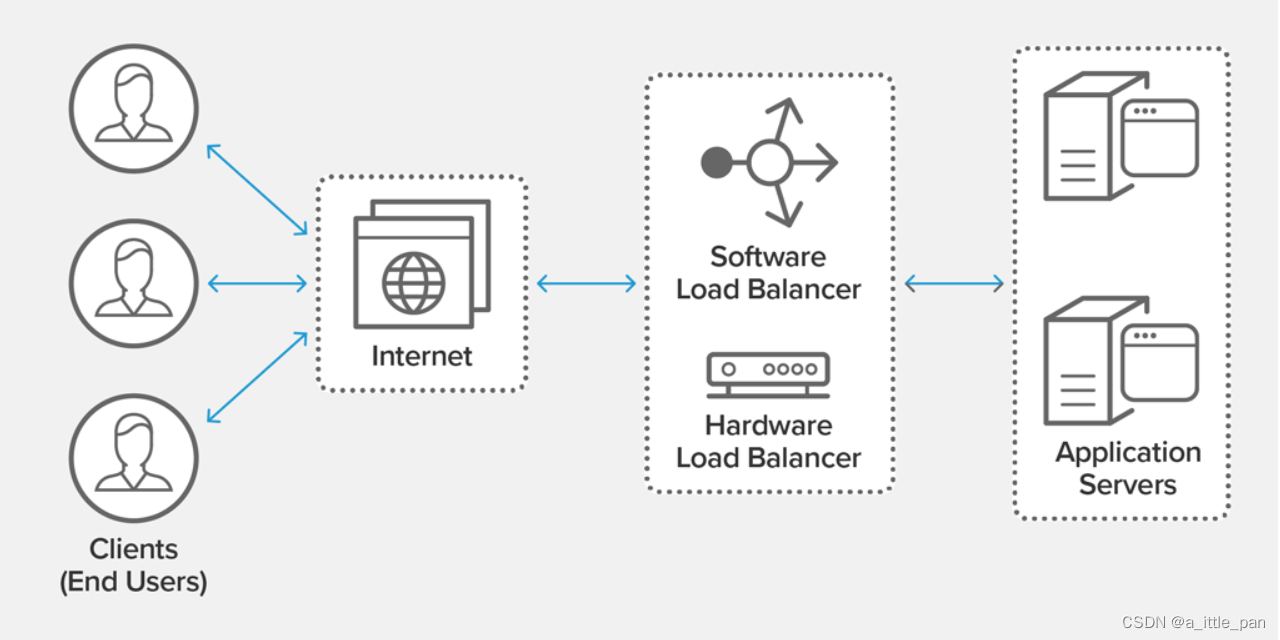
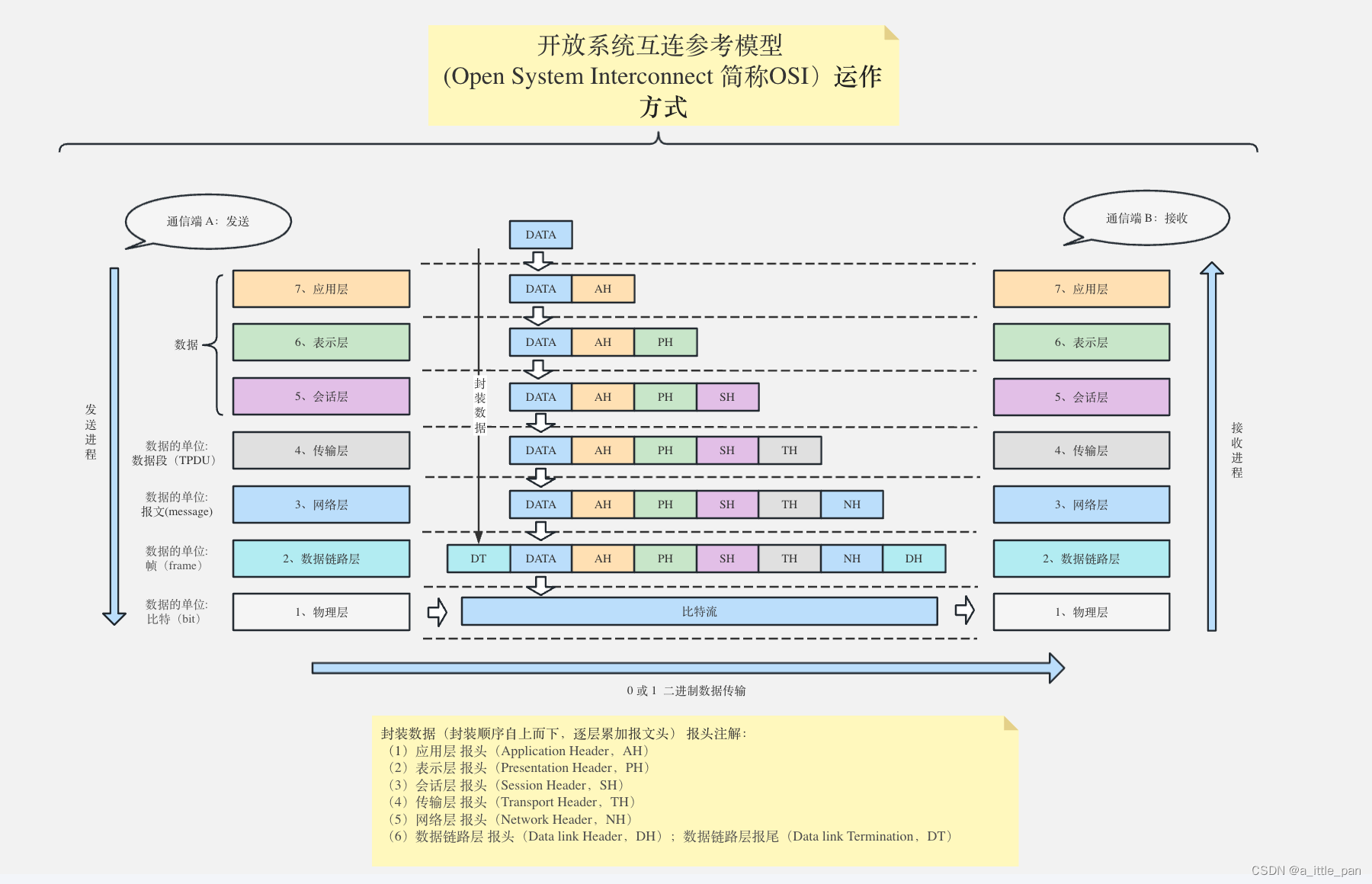
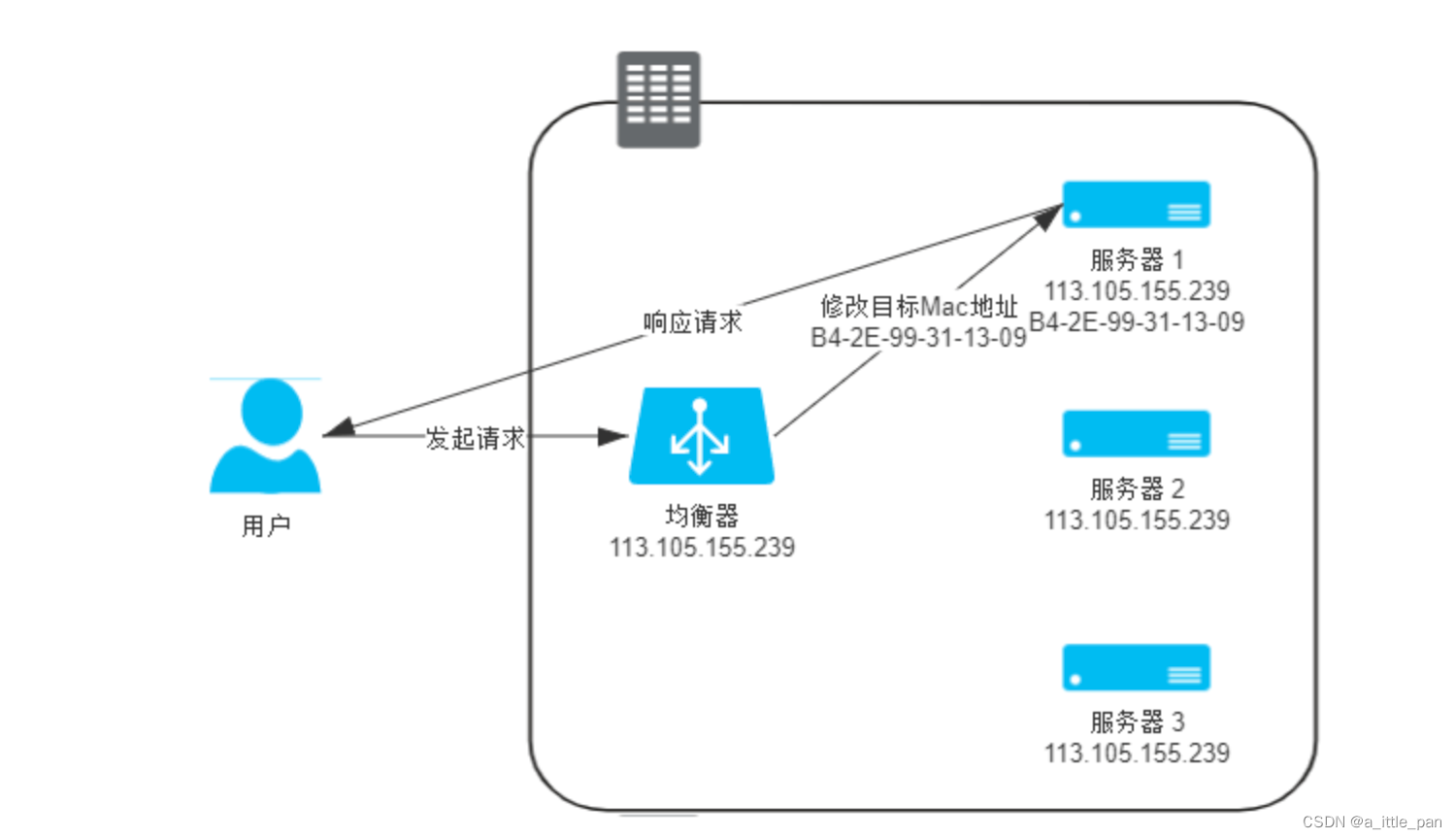
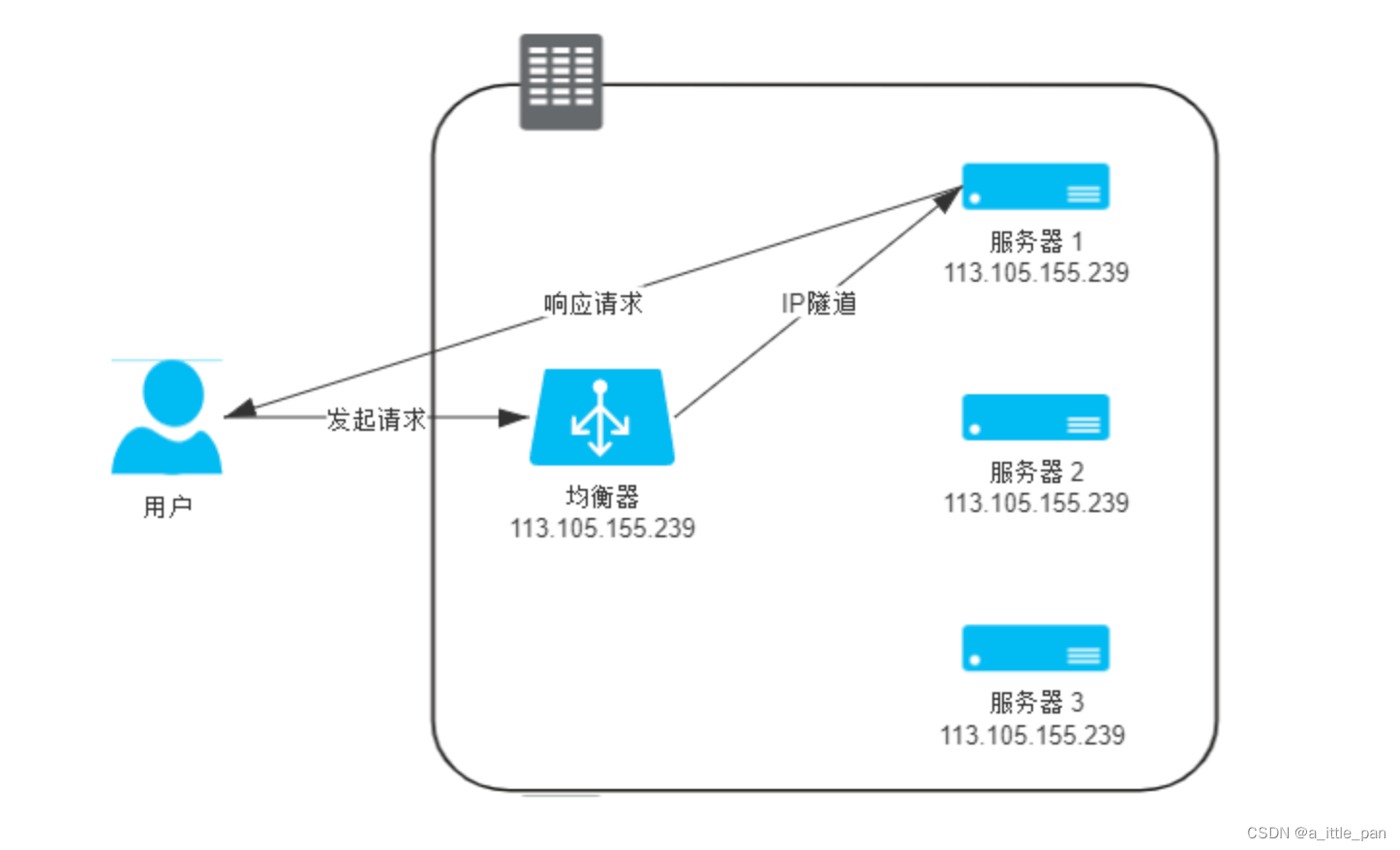
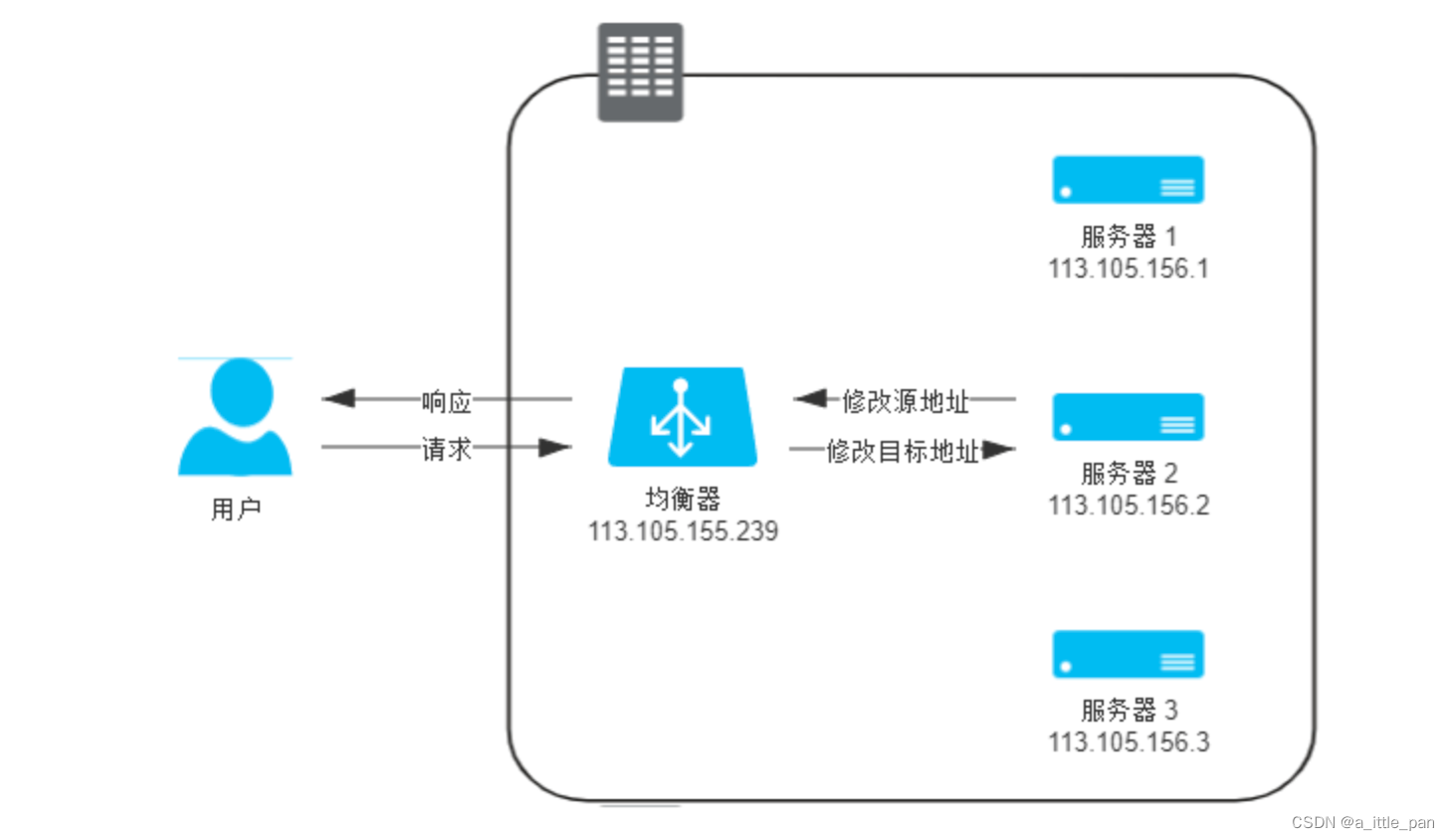
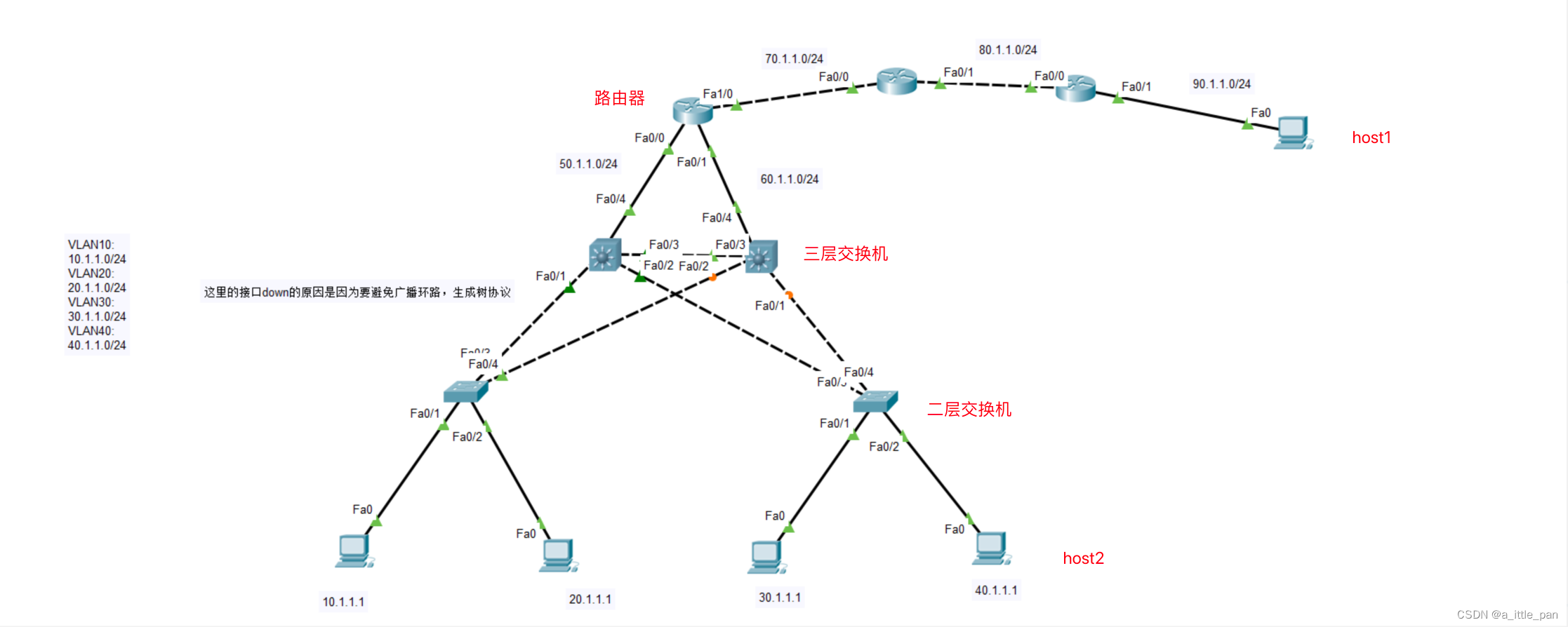
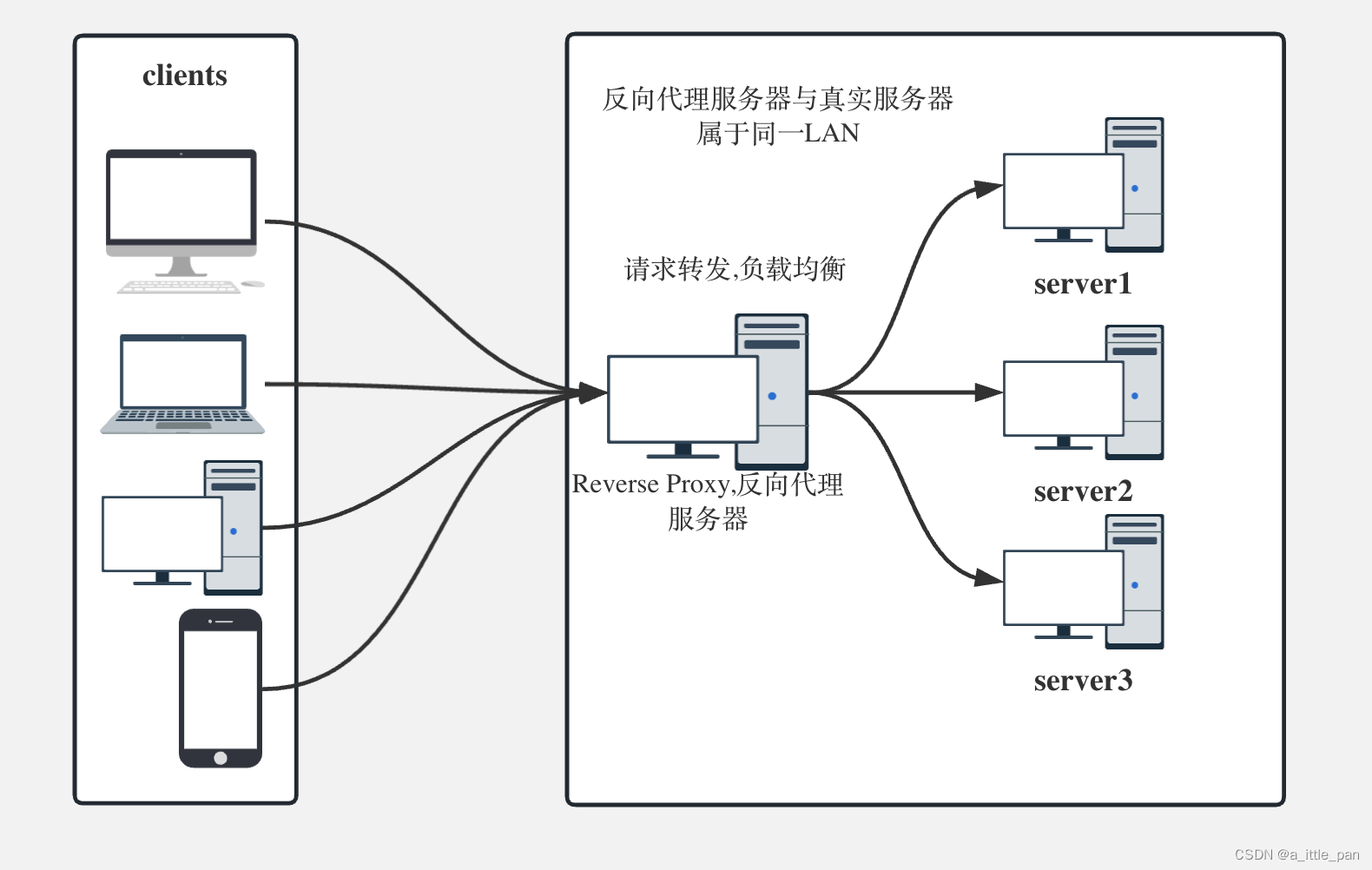











评论